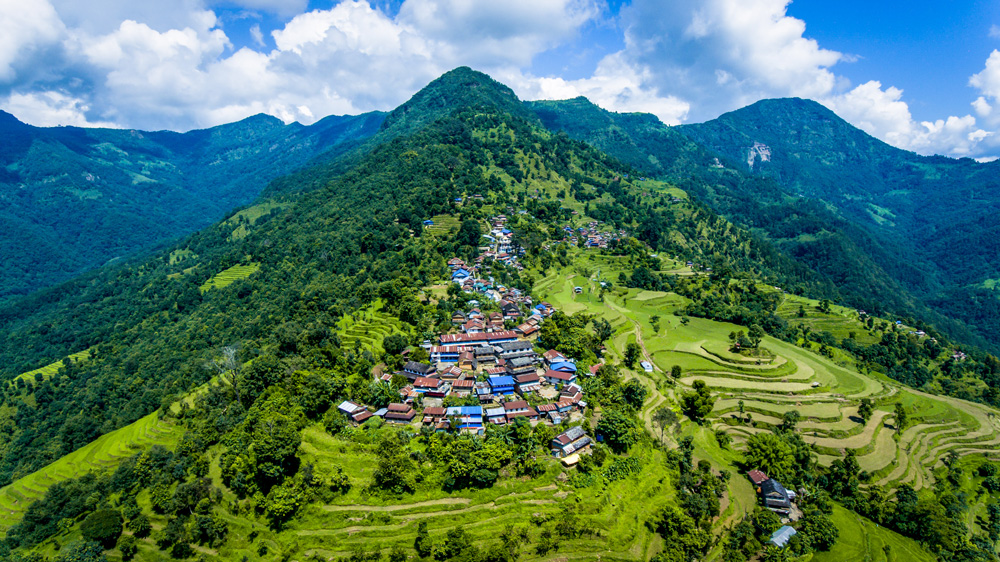The Global Landscape Forum (GLF), an event, a platform and now a movement devoted to sustainable land use, gathered a diverse crowd of participants in Bonn during the first weekend of December 2018. Titled “Connecting for impact: From commitment to action” this year’s event had a special focus on multi-stakeholder dialogue and partnerships.
SIANI and Focali teams participated in the Forum and gathered these take-aways to provide a snapshot of the recent developments on the sustainable landscape agenda.
Working in partnership is challenging, but essential.
The trick of working in multi-stakeholder partnerships is about reconciling different interests. Willem Ferwerda, founder and CEO of Commonland, created a “4 returns on landscape restoration” approach which reconciles ecological and economic lexicons, establishing common understanding and shared vision between the stakeholders: “It is about building a purpose economy”. According to Paula Agostitni, Lead Environmental Economist, Environment and Natural Resources Global Practice at World Bank, all sectors have stakes in healthy productive natural resources, figuring what these stakes are can help combine budgets. Both Agostini and Ferwerda agree that investors need to understand that initial costs of sustainability are high, but returns grow exponentially and have a long-lasting impact.
Landscape planning needs to recognize trade-offs between different goals.
Barron Joseph Orr, Lead Scientist at the UN Convention to Combat Desertification, UNCCD pointed out that it’s not uncommon that the SDGs compete for the same land resources. There is a lot of potential in the goals related to economic development, conservation, renewable energy, food-security and restoration, but the trade-offs between the goals in the 2030 Agenda and within the landscape need better recognition. The solution is to avoid silo-planning and work through dialogue and data sharing to establish coherence between the goals. This can optimize action and resource use, amplifying the impact: “This way we can turn land from something that everyone is competing for into a resource that accelerates progress towards multiple SDGs.”
Sustainable landscape initiatives lack sufficient performance history.
Hence, the lack of financing. “The lack of a track record means uncertainty for investors because they can’t measure and quantify their risks. That is why there is a lot of “wait and see behavior” rather than proactive action,” says Simone Quatrini of Ecosystem Services Partnership, ESP. The track record can also tell investors if the implementation entities have the capacity to handle the funds. That said, the participants at the GLF are hopeful that creating investable cases for landscape is only a matter of time. “Putting engineers together with politicians and the finance sector sparked development of the railway industry, and in 30 years, we went from zero railways to extraordinary coverage. And I think we are at this starting point with the landscape approaches,” Paul Chatterton, Landscape Finance Lab, WWF.
There is a fountain of wealth at the grassroots level.
While it is true that foreign investments and support provide positive contributions for development, it does not mean that is the only way to do development. Many refreshing examples presented at the GLF are grassroots initiatives in Africa, where both the idea and implementation of projects is in the hands of local people. This is an important reminder that one doesn’t always need to reinvent the wheel with new projects from outside, but that supporting the already existing ones can be more effective and sustainable.
Access to quality and diverse planting material is a major bottleneck for restoration.
Many countries are committing to extensive restoration efforts following the Bonn Challenge. A discussion hosted by CGIAR Research Program on Forests, Trees and Agroforestry (FTA), Bioversity International and World Agroforestry Centre (ICRAF) highlighted the acute limitations in access to sufficient genetically-diverse plant material to meet these demands. In particular, restoration for biodiversity will require seed and seedling from a multitude of native, often threatened species. Apart from being a challenge, this is a great opportunity to engage local agribusiness in restoration efforts.
People on the ground, especially indigenous peoples and women, are central stakeholders and partners when it comes to landscapes.
Another recurrent theme at GLF was about how to handle the urgency of global challenges, such as climate change and land degradation, while ensuring genuine participation of local communities’ and indigenous groups, with respect to their land tenure and rights. “Climate change mitigation and adaptation intersect with inequalities and oppression of minority groups and women. Thus, we need to employ a human rights framework to co-create initiatives that benefit marginalized groups,” said Janene Yazzie, Navajo activist.
Having youth in your corner.
Compared to many similar development gatherings, the Global Landscape Forum is making a big effort to integrate young people into its activities. Youth features in many panels and leads their own sessions. However, as one slightly frustrated youth representative said during one of the plenaries: “Yes, we are young, but we still have something very important to bring to the decision makers table,” pointing out that there is still a big gap between generations in the development world. Not only do the young people enrich development discussions with innovations and ambitions, but they also challenge old ideas with new, it is not enough to make a separate stream of activities, better integration is needed.
